 by Scott Koepke, Etzel Sugar Grove Farm Manager
by Scott Koepke, Etzel Sugar Grove Farm Manager
The following entry is my entire annual report on the 2019 growing season at Etzel Sugar Grove Farm that was written prior to the COVID-19 pandemic. All of the content remains relevant to today, and all of the activities highlighted here from last year are being expanded upon this year. However, all of us have realized that, since the pandemic began, it’s a different world. For many of us, plans have changed, and values have been recalibrated. In light of this new reality, two main themes have been affirmed for me now more than ever in my career: a.) Local food security is absolutely critical to strengthen. We all eat. Food production and procurement can grow common ground regardless of politics; and b.) as I teach kids in life skills, ‘when life gives you garbage, make compost.
—–
We’ve been growing — literally and figuratively — at Etzel Sugar Grove Farm. Over the course of 2019 and into 2020, we’ve been focused on building three essential resources for any healthy ecosystem: soil, biodiversity and relationships.
I need to get into the deep weeds of soil science for just a moment. When I teach children about food origins, we chant the four words “Soil, plants, food, us!” It all starts with soil. I love the look on a first grader’s face when they realize that meat comes from plants, since animals need to eat plants before we can eat animals (this realization has turned some kids into vegetarians, by the way ). But the vital point is that plants need to eat first.
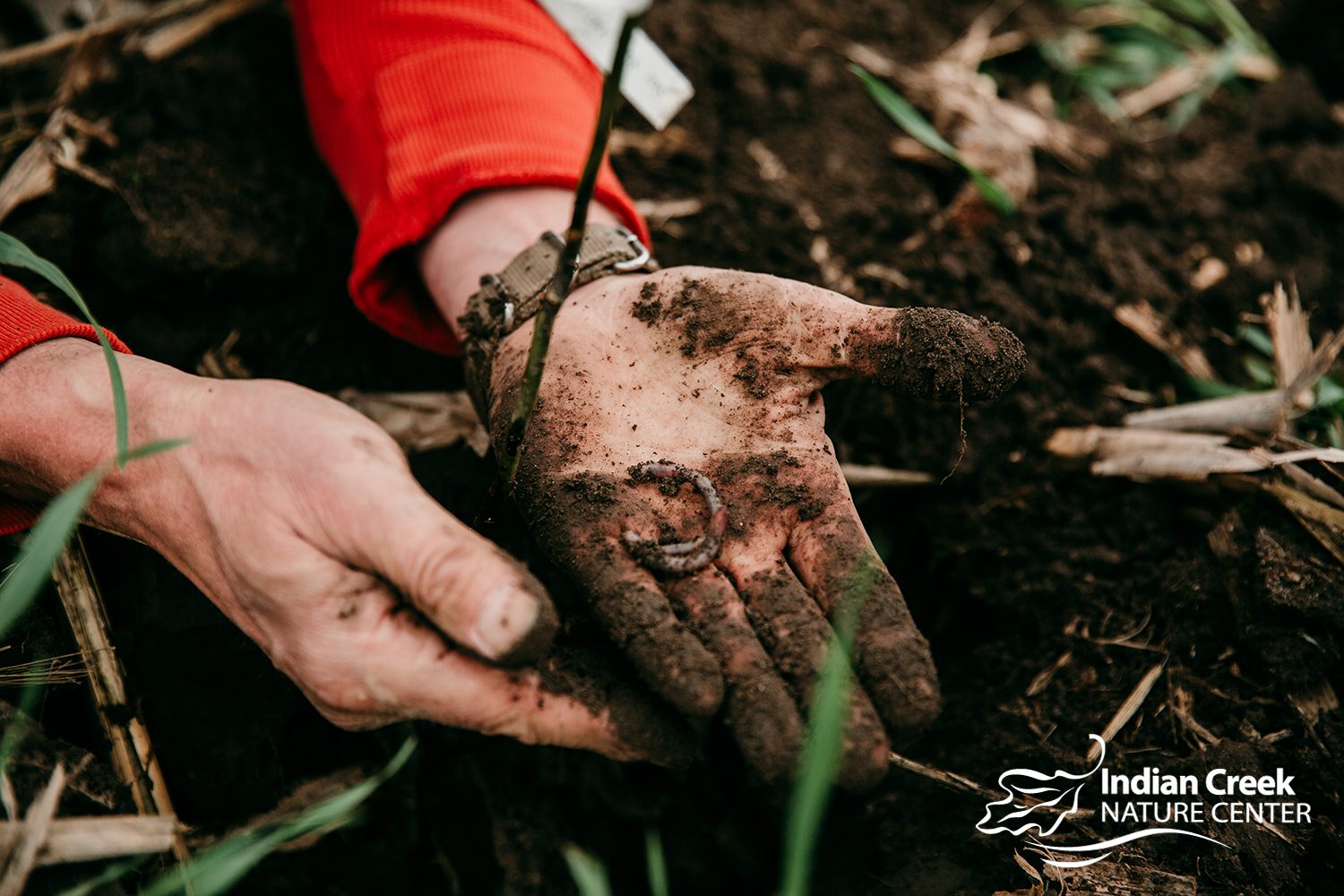
When I was a young student, we stopped at photosynthesis. Now we’re also digging into what it means to help, not harm, the living, breathing, hydrating biological life of soil as a prerequisite to any of us having any food to eat – or oxygen to breathe, as plants provide that as well. Pretty important stuff.
At Sugar Grove, we are driven passionately to advance soil health by primarily building soil organic matter through cover crops: rye, buckwheat, oats, clover and sorghum. Again, not for us to eat, but for the soil to eat. This is known as the Soil-Food Web, or Bio-Chem for Botany. When these plants decompose, they are eaten and processed by microbial and fungal communities that yield available nutrients to be absorbed back into the rhizosphere (root network) of the plants coming behind in the following cycle for human consumption. Old plants (organic matter) transformed into the ingredients for new plants.
Not only are we growing our own nutrients with cover crops, they are also fulfilling two other critical roles. They retain hydration in the soil, and they outcompete weed pressure. Cover cropping is the foundation of regenerative agriculture. It is a practice that builds more organic matter than it extracts. Put another way, it gives back more than it takes.
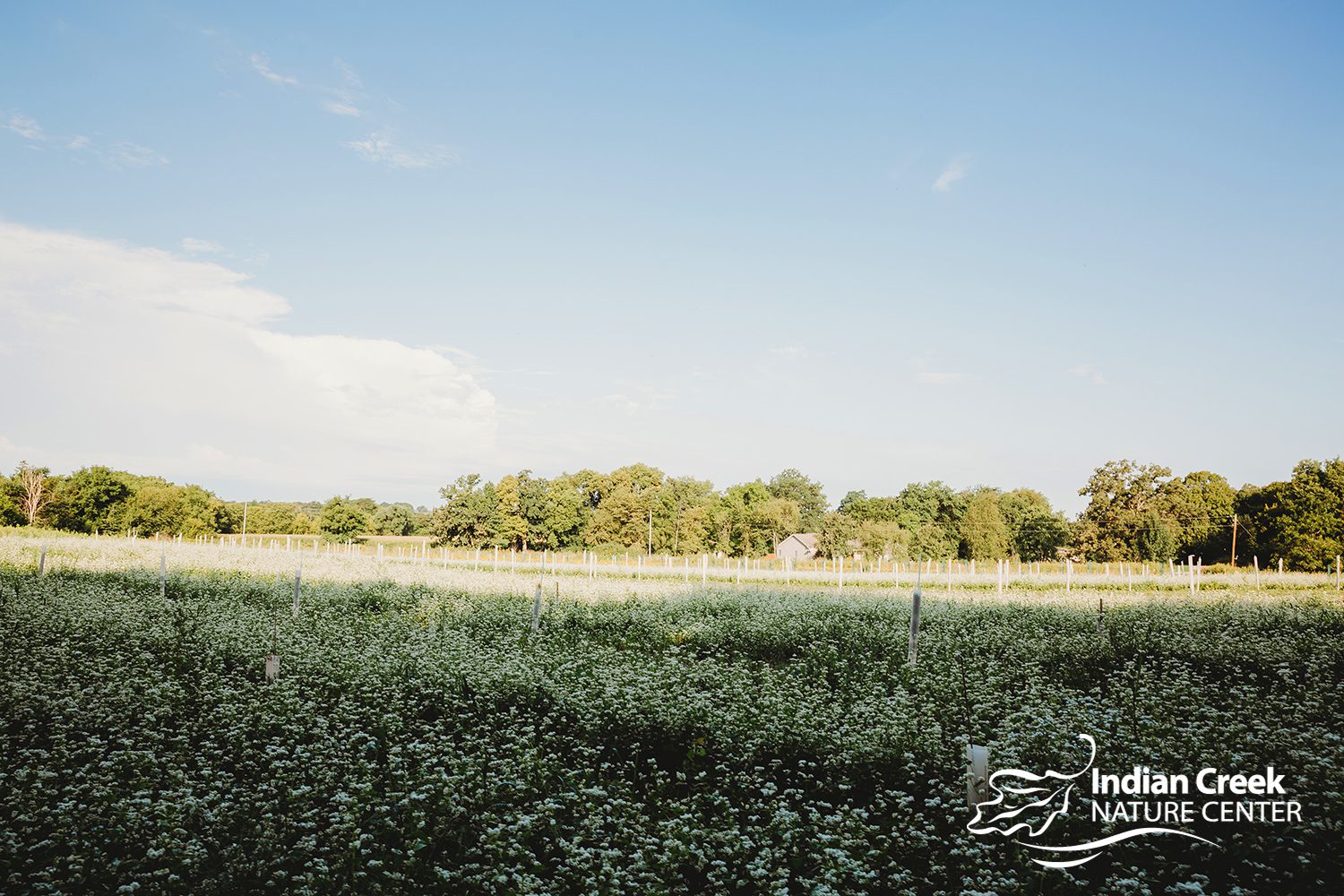
Enhancing biodiversity serves a similar function. I also teach that there is a direct, causal link between Diversity and Balance in systems. If we only eat one thing, we get sick. If we only invest in one thing, it’s not smart. When we sacrifice biodiversity on the planet, our ecosystems are more prone to extremes, especially extremes in weather and predator-prey (beneficial insect) relationships. 2019 modeled biodiversity at the farm in the 8 acre Frontier Permaculture Field by cultivating a rich buffet of fruit and nut trees, vegetables, flowers, cover crops, and critters.
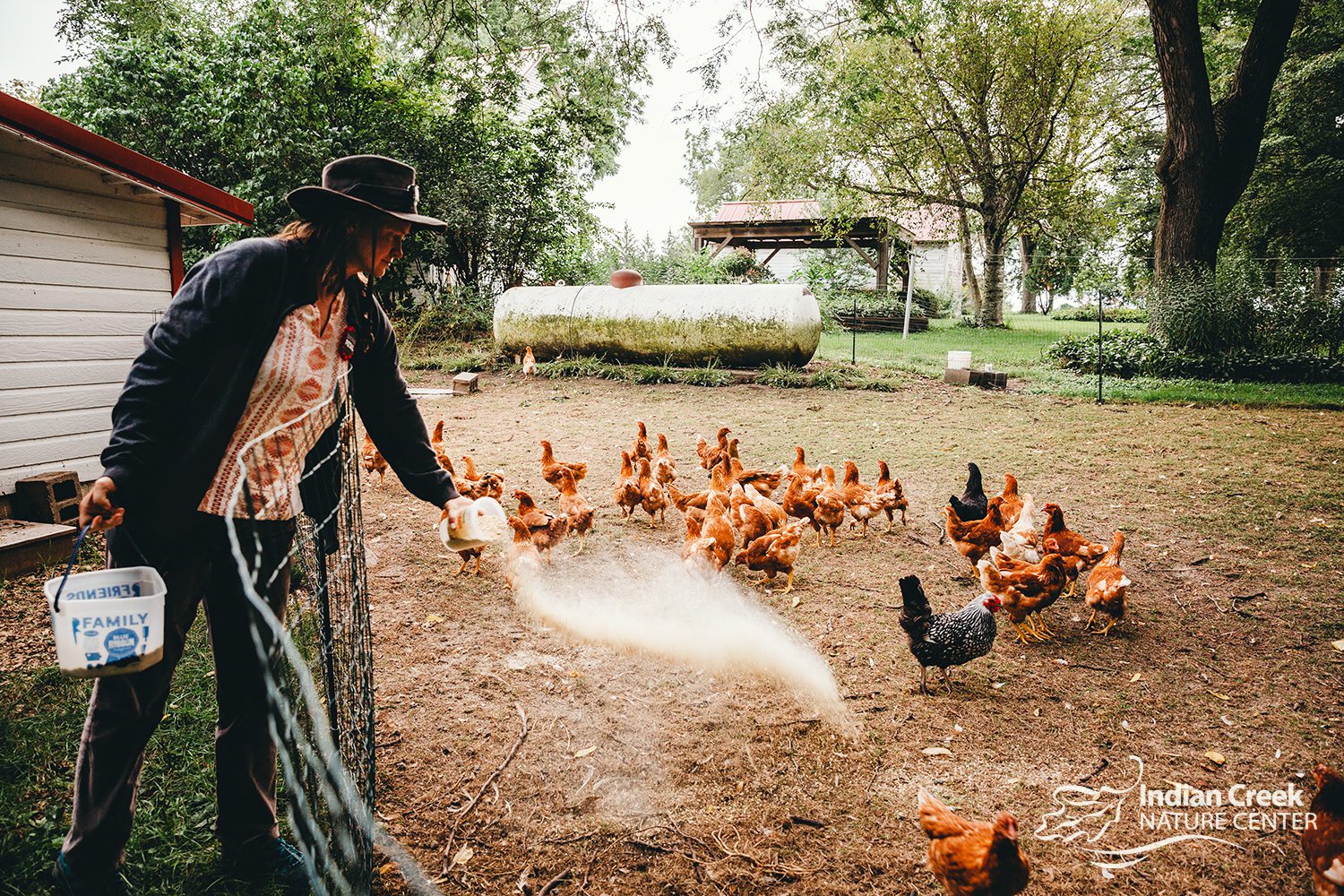
Ah, critters! My favorites of which are the 65 Isa Brown layer hens, giving us over five dozen eggs a day that we are selling at both the ICNC gift shop and to Frontier Co-op. These girls teach me resilience, and they make me laugh every day. And the flock will be certified organic this season. The Frontier Field will be eligible for certification in November of 2021.
Much gratitude is in order to our Board of Directors who authorized the purchase of my primary indispensable tool for management of the permaculture plots this past summer: a new BCS tiller and power flailer.
We continue to lease 80 acres of the farm to the Squires family for their corn & soy production. They are wonderful neighbors, among many others, with whom we are building non-judgmental bridges of agriculture in many forms — conventional, organic, transitional, come one come all.
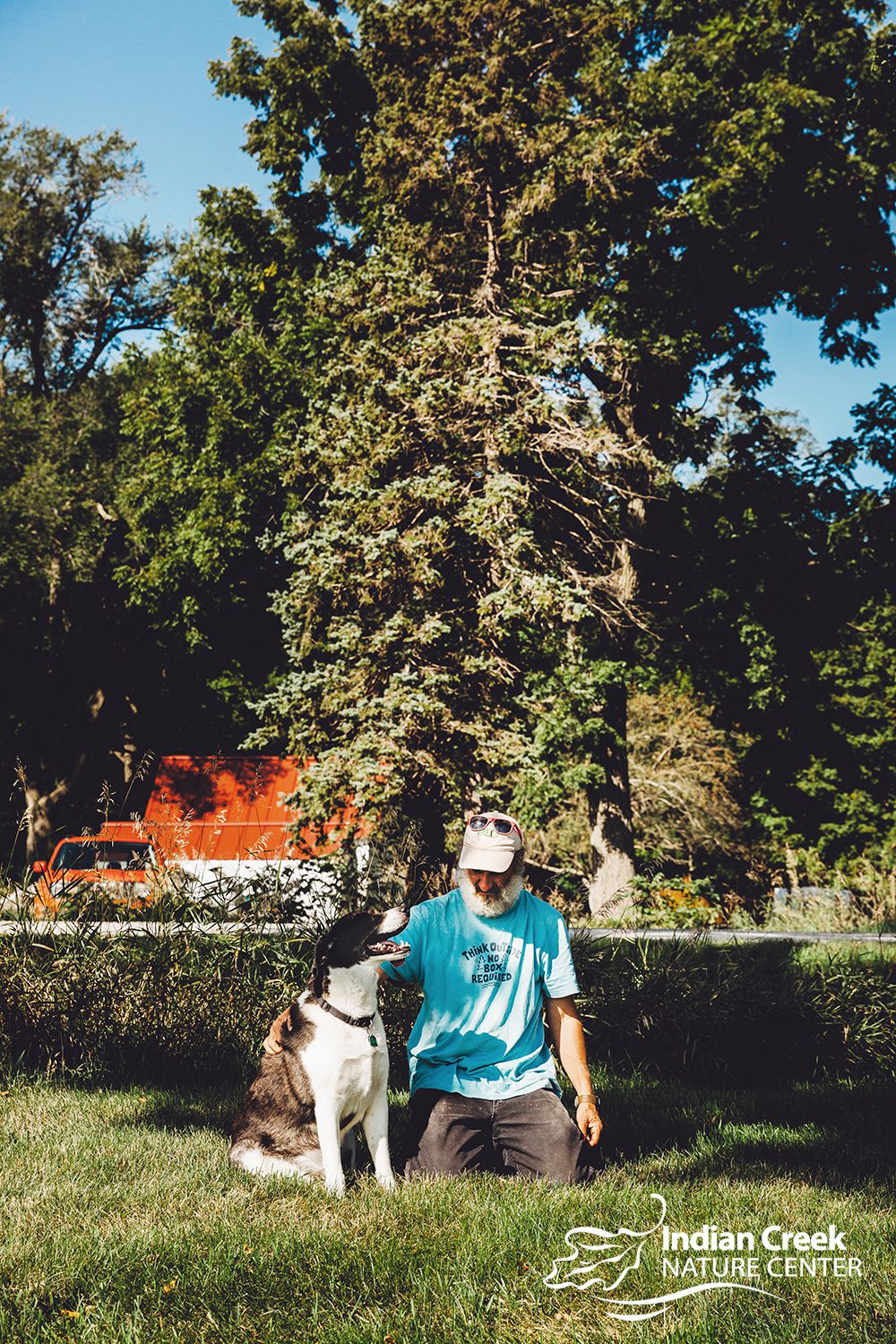
We’re trying to model profitable diversification. No farmer wants to put all their eggs in one basket.
To be sure, there are some plants we simply cannot grow and sell in zone 5A. But the relationships I am developing every day with ag lenders, market procurement directors, land owners, academics, policy makers, and equipment sales stakeholders, are the multiple players we all need to work together with to strengthen Iowa’s agricultural health for the next generation of farmers.
Farming teaches me many life lessons, but the one I perhaps learn and relearn every season more than any other is Adaptation. Mother Nature is in charge. We must work with, not fight, her. That ancient wisdom is the heart and soil of regenerative agriculture, humbly on display at Etzel Sugar Grove Farm.

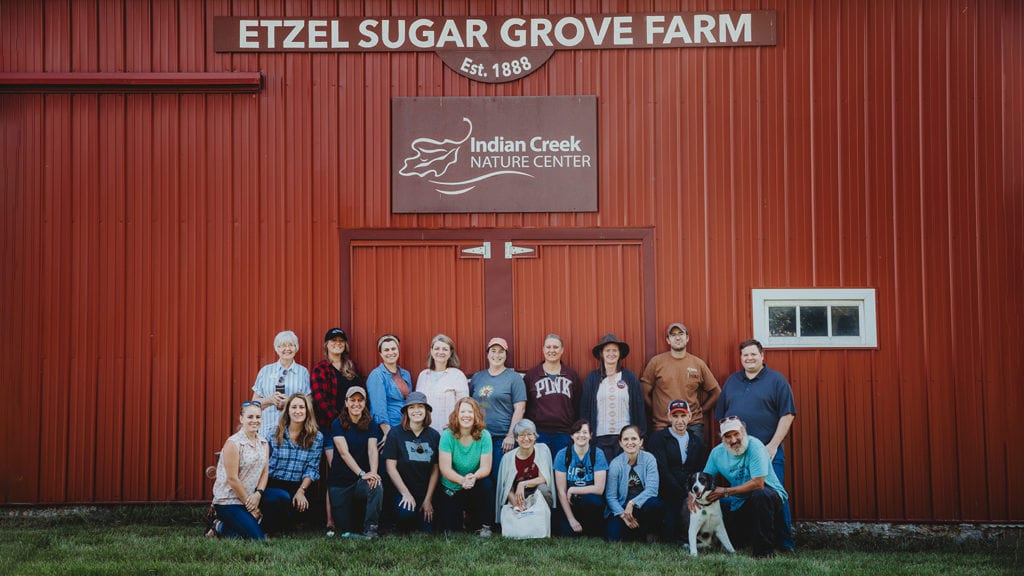
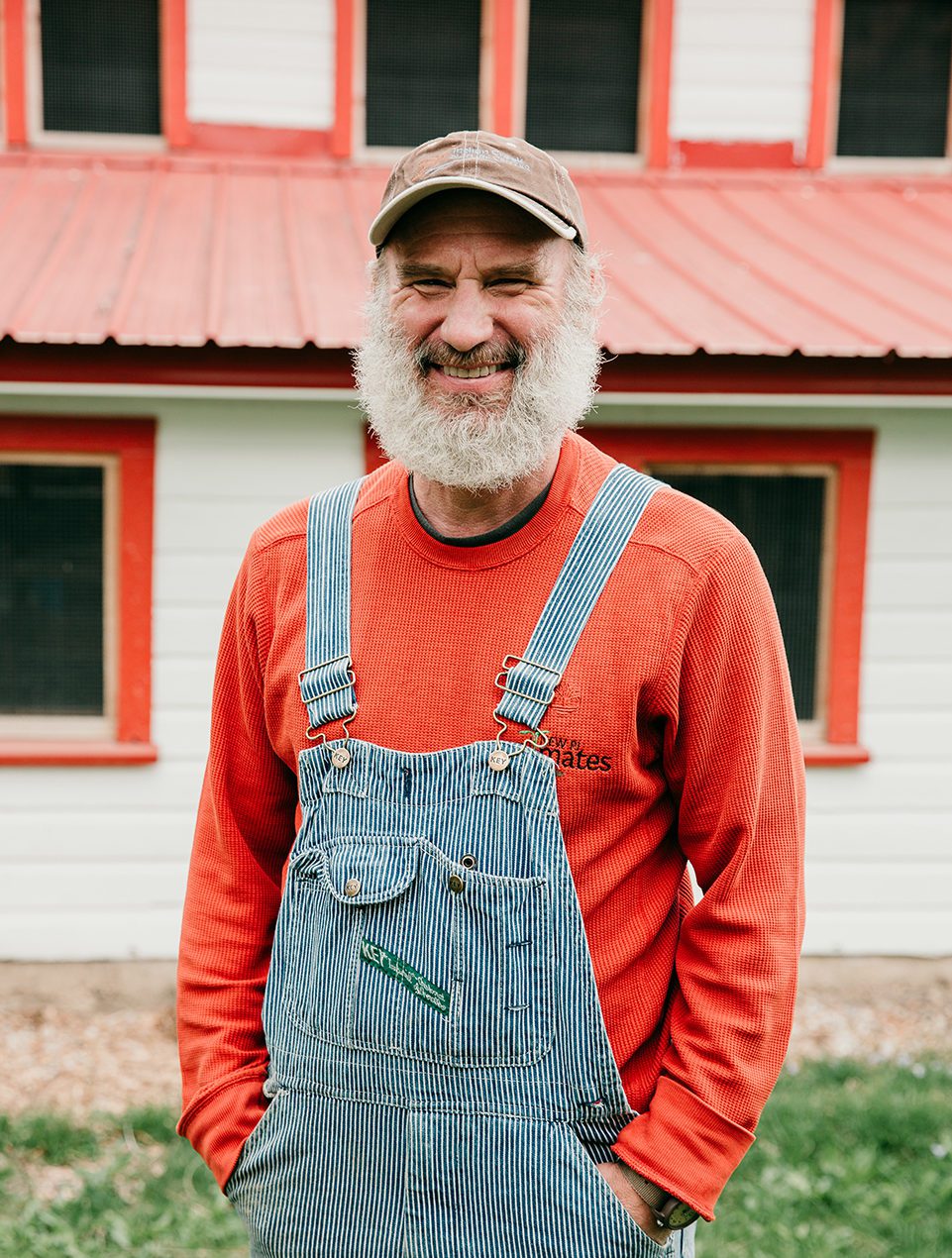 by Scott Koepke, Etzel Sugar Grove Farm Manager
by Scott Koepke, Etzel Sugar Grove Farm Manager